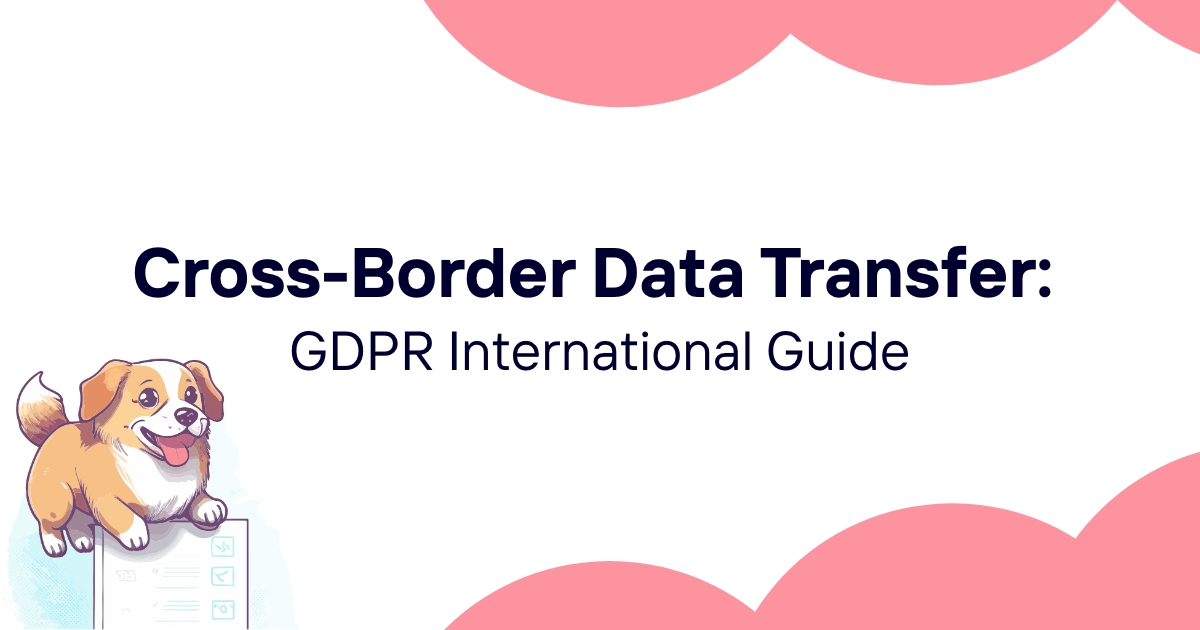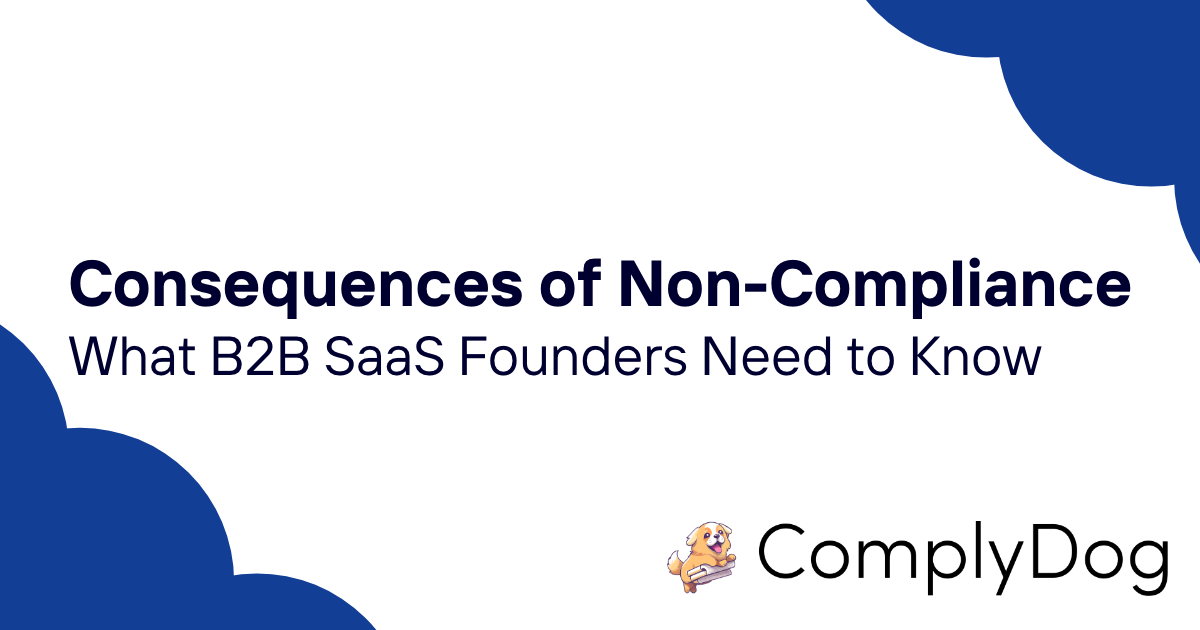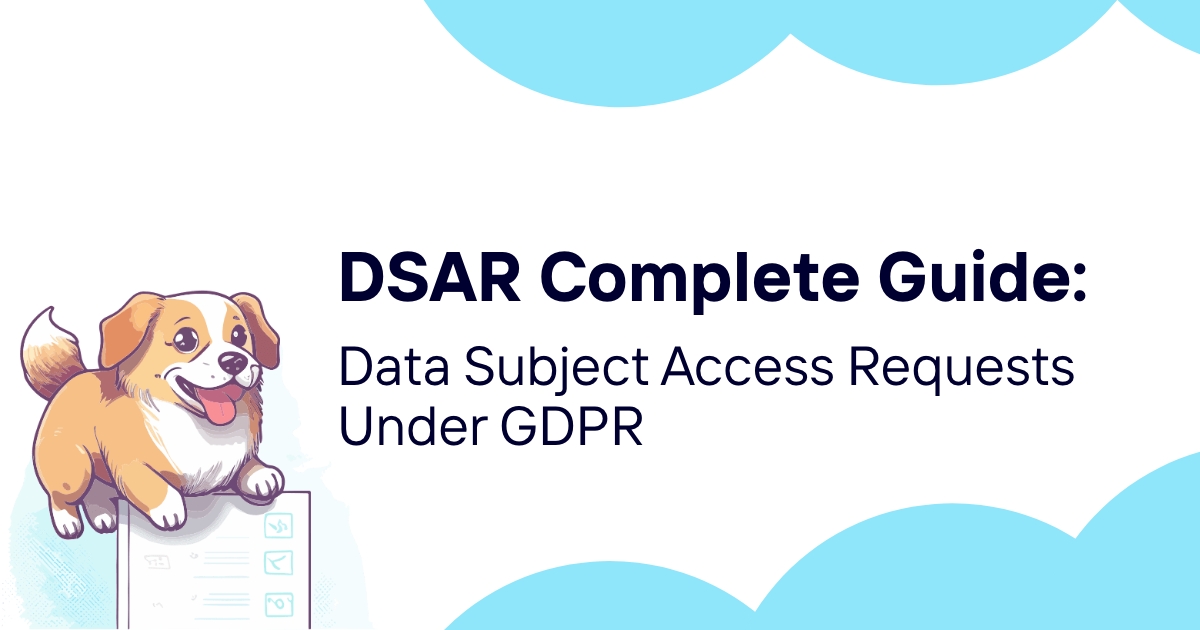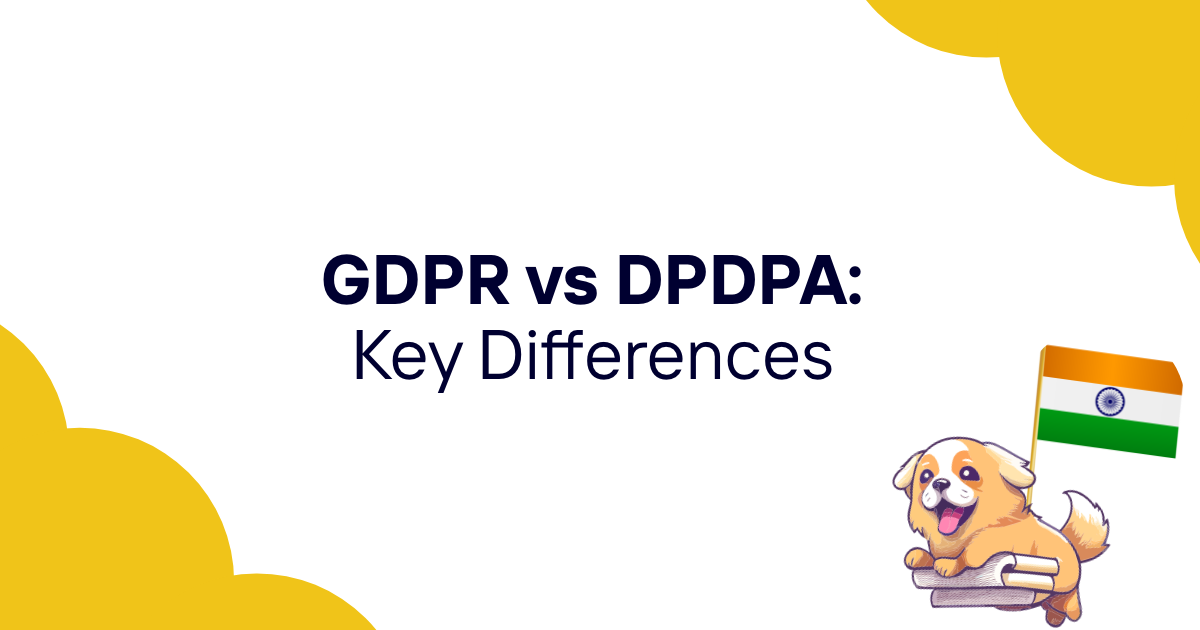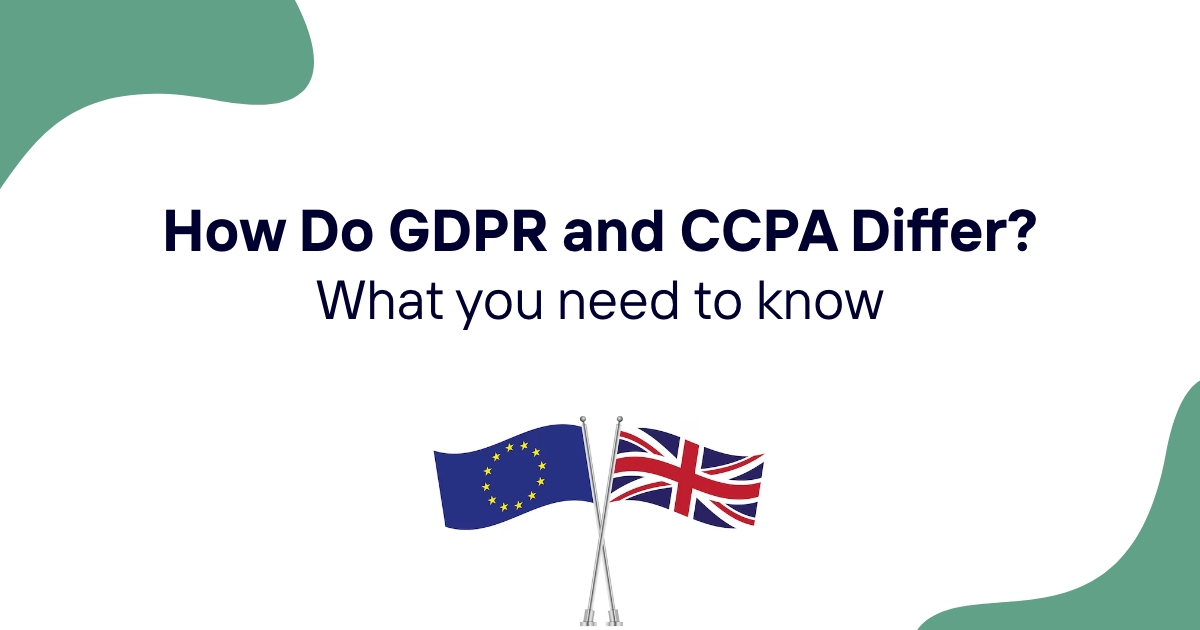Cross-border data transfers power global business operations, but GDPR restrictions can turn routine international data sharing into complex compliance challenges. Many organizations discover too late that their transfer mechanisms don't provide adequate protection.
The Schrems II decision invalidated Privacy Shield and raised questions about other transfer mechanisms, creating uncertainty for thousands of organizations that rely on international data flows for daily operations.
This guide provides practical strategies for compliant cross-border data transfers that support global business while meeting GDPR requirements and protecting individual privacy rights.
GDPR International Transfer Requirements
Legal Foundation Under Chapter V
GDPR Chapter V establishes comprehensive restrictions on transferring personal data outside the European Economic Area without adequate protection measures.
Article 44 requires that transfer protections ensure GDPR compliance continues throughout international data processing, not just during initial transfer activities.
Transfer restrictions apply to both direct transfers to third countries and indirect transfers through technical infrastructure or business processes that route data internationally.
The principle of accountability extends to international transfers, requiring organizations to demonstrate adequate protection rather than simply claiming compliance.
Prohibited Transfer Scenarios
Transfers without appropriate safeguards violate GDPR regardless of business necessity or contractual obligations with international partners or customers.
Routing data through third countries during transmission creates transfer obligations even when final destinations have adequate protection measures.
Cloud services and technical infrastructure often create inadvertent transfers when data processing occurs in multiple jurisdictions simultaneously.
Emergency or temporary transfers still require appropriate safeguards unless specific derogation conditions apply to the particular transfer circumstances.
Transfer Mechanism Hierarchy
Adequacy decisions provide the strongest legal basis for transfers by recognizing that destination countries offer essentially equivalent protection to GDPR standards.
Appropriate safeguards including Standard Contractual Clauses and Binding Corporate Rules provide alternative mechanisms when adequacy decisions don't exist.
Specific situation derogations offer limited exceptions for particular transfer circumstances but cannot support regular business operations or systematic transfers.
Transfer impact assessments may require supplementary measures to address specific risks in destination countries even when other mechanisms apply.
Enforcement and Penalties
Supervisory authorities actively investigate international transfer compliance and can impose significant penalties for violations including transfer suspension orders.
Recent enforcement actions demonstrate regulatory focus on transfer compliance with substantial fines for organizations using inadequate protection mechanisms.
Regulatory guidance continues evolving toward stricter transfer requirements including enhanced due diligence and supplementary protection measures.
Appeal processes exist for challenging regulatory transfer decisions, but obtaining relief typically requires demonstrating substantial compliance improvements.
Adequacy Decisions and Safe Countries
Current Adequacy Status
The European Commission has granted adequacy decisions to specific countries including Andorra, Argentina, Canada (commercial organizations), and several others with equivalent privacy frameworks.
Adequacy decisions enable transfers as if destination countries were EU member states, eliminating need for additional safeguards or transfer impact assessments.
Adequacy status can change if destination countries modify privacy laws or enforcement practices that affect protection equivalence with GDPR standards.
Regular adequacy reviews assess whether protection levels remain adequate as legal and practical circumstances evolve in destination countries.
Adequacy Assessment Criteria
Legal framework evaluation examines destination country privacy laws including individual rights, enforcement mechanisms, and regulatory oversight capabilities.
Enforcement effectiveness review considers supervisory authority independence, investigation powers, and penalty capabilities that ensure compliance with privacy requirements.
Government access assessment evaluates surveillance laws and intelligence activities that might undermine privacy protection for personal data.
International cooperation analysis considers destination country participation in privacy frameworks and willingness to cooperate with EU authorities.
United Kingdom Post-Brexit
The UK received adequacy decisions for both commercial and law enforcement purposes following Brexit transition arrangements.
UK adequacy remains subject to regular review and could be withdrawn if UK privacy laws diverge significantly from GDPR standards.
Transfers to the UK generally proceed without additional safeguards, but organizations should monitor regulatory developments that might affect adequacy status.
UK-EU data flows continue operating under adequacy decisions while both jurisdictions develop independent privacy frameworks and enforcement approaches.
United States Complications
The US lacks general adequacy but has sector-specific arrangements including agreements for financial services and limited commercial frameworks.
Privacy Shield invalidation eliminated the primary mechanism for EU-US transfers, requiring alternative safeguards for most commercial data flows.
State-level privacy laws in California, Virginia, and other states provide enhanced protection but don't achieve GDPR adequacy for international transfer purposes.
US surveillance laws continue creating challenges for transfer mechanisms including Standard Contractual Clauses that may require supplementary measures.
Standard Contractual Clauses (SCCs)
New SCC Framework
The European Commission adopted new Standard Contractual Clauses in 2021 to address Schrems II concerns and provide enhanced protection for international transfers.
New SCCs include mandatory transfer impact assessment requirements and provisions for supplementary measures when destination country laws create privacy risks.
Module-based structure accommodates different transfer scenarios including controller-to-controller, controller-to-processor, and processor-to-processor arrangements.
Transition periods allowed organizations to migrate from old SCCs to new versions, but old clauses are no longer valid for new transfer arrangements.
Implementation Requirements
Transfer impact assessments must evaluate whether destination country laws or practices might prevent SCC compliance or undermine privacy protection.
Supplementary measures may be required to address specific risks identified during transfer impact assessments including technical, contractual, or organizational controls.
Documentation obligations require maintaining records of transfer impact assessments, supplementary measures, and ongoing compliance monitoring activities.
Suspension obligations require stopping transfers if SCCs cannot be complied with due to destination country legal or practical obstacles.
Contractual Provisions
Data exporter obligations include conducting transfer impact assessments and implementing supplementary measures necessary for adequate protection.
Data importer commitments encompass compliance with GDPR-equivalent protections and notification of legal obstacles that might prevent SCC compliance.
Third-party beneficiary rights enable data subjects to enforce SCC provisions directly against both data exporters and importers through legal action.
Governing law and jurisdiction clauses ensure disputes are resolved under EU member state law with appropriate court supervision.
Practical Implementation Challenges
Legal complexity of SCCs requires careful legal review and implementation planning to ensure contracts properly address specific transfer scenarios.
Business process integration must ensure SCC obligations are reflected in operational procedures and staff training rather than just contractual documents.
Ongoing compliance monitoring requires systems to track SCC performance and identify when supplementary measures or transfer suspension might be necessary.
Consider how SCC implementation integrates with broader third-party risk management programs and vendor oversight activities.
Binding Corporate Rules (BCRs)
BCR Framework Overview
Binding Corporate Rules enable multinational organizations to transfer personal data within corporate groups based on comprehensive privacy policies approved by supervisory authorities.
BCR approval requires demonstrating adequate privacy protection throughout the corporate group including subsidiaries and affiliates in third countries.
Enforcement mechanisms must include binding obligations, supervisory authority oversight, and individual rights that provide equivalent protection to GDPR standards.
BCR scope can cover different processing activities including HR data, customer information, or specific business functions depending on organizational needs.
Approval Process Requirements
Lead supervisory authority coordination manages BCR approval through cooperation procedures involving all relevant EU privacy authorities.
Comprehensive documentation must demonstrate privacy governance, technical measures, training programs, and compliance monitoring throughout the corporate group.
Public consultation enables civil society input on proposed BCRs before final approval decisions from supervisory authorities.
Implementation timeline typically requires 12-24 months for BCR approval depending on complexity and supervisory authority review capacity.
BCR Content Requirements
Corporate privacy policy must establish binding obligations for all group entities including data protection principles and individual rights protection.
Governance structure documentation should specify privacy roles, reporting relationships, and accountability mechanisms throughout the multinational organization.
Training and awareness programs must ensure staff understand BCR obligations and implement privacy protection consistently across different jurisdictions.
Audit and monitoring procedures should provide ongoing verification of BCR compliance and identification of areas where improvements might be needed.
Ongoing Compliance Obligations
Annual reporting requires submitting compliance summaries to lead supervisory authorities including incident reports and significant policy changes.
Audit requirements mandate regular reviews of BCR implementation and effectiveness across all group entities covered by approved rules.
Update procedures enable modifications to BCRs when business circumstances change while maintaining supervisory authority approval and adequate protection.
Individual rights handling must provide consistent protection across all group entities with clear procedures for data subject requests and complaints.
Transfer Impact Assessments
Assessment Framework Development
Transfer impact assessments must evaluate destination country legal frameworks including privacy laws, surveillance regulations, and government access provisions.
Practical assessment considers real-world enforcement patterns, government practices, and business environments that might affect personal data protection.
Risk identification should encompass both general country risks and specific circumstances affecting particular transfers including data types and processing purposes.
Documentation requirements include maintaining detailed records of assessment methodology, findings, and supplementary measures implemented based on results.
Legal Environment Analysis
Constitutional protections review examines destination country fundamental rights frameworks and their application to personal data and privacy protection.
Surveillance law assessment evaluates government access powers including national security, law enforcement, and intelligence gathering authorities.
Data localization requirements consider laws mandating local data storage or processing that might affect transfer arrangements or data protection.
Judicial oversight analysis examines court systems and legal remedies available for privacy violations or government overreach in destination countries.
Government Access Evaluation
Intelligence agency powers assessment considers scope of surveillance authorities and their potential impact on personal data transferred to destination countries.
Law enforcement access evaluation examines criminal investigation powers and procedures for accessing personal data held by private organizations.
National security provisions review special government authorities that might override normal privacy protections during emergencies or security investigations.
International cooperation agreements assess destination country participation in intelligence sharing or law enforcement cooperation that might affect transferred data.
Supplementary Measures Design
Technical measures might include encryption, pseudonymization, or other technologies that maintain privacy protection even if government access occurs.
Contractual measures could specify additional obligations, notification requirements, or transparency provisions beyond standard SCC requirements.
Organizational measures might encompass staff training, audit procedures, or incident response protocols that enhance privacy protection in destination countries.
Legal measures could include challenge procedures, transparency reporting, or notification obligations when government access requests occur.
Specific Transfer Scenarios
Cloud Computing Services
Infrastructure as a Service transfers often involve data storage and processing in multiple jurisdictions requiring comprehensive transfer compliance strategies.
Platform as a Service arrangements may create complex data flows between different countries during application development and operation activities.
Software as a Service providers frequently process customer data in various locations requiring careful analysis of transfer mechanisms and supplementary measures.
Multi-cloud strategies create additional complexity when data moves between different cloud providers operating in various jurisdictions with different legal frameworks.
Third-Party Processors
Vendor selection criteria should include transfer compliance capabilities and willingness to implement necessary safeguards for international data processing.
Service provider agreements must include appropriate transfer mechanisms and clear allocation of responsibilities for transfer impact assessments and supplementary measures.
Sub-processor management requires ensuring all downstream providers implement adequate transfer protections throughout complex processing chains.
Monitoring obligations include regular verification that processors maintain transfer compliance and implement required supplementary measures effectively.
Intra-Group Transfers
Subsidiary data sharing often requires BCRs or SCCs even within corporate groups when entities operate in different jurisdictions.
Shared services arrangements may create transfers when centralized functions like HR or IT support operate from locations outside the EU.
Backup and disaster recovery activities frequently involve cross-border transfers that require appropriate safeguards even for temporary storage.
Reporting and analytics transfers enable global business intelligence but require careful attention to transfer mechanisms and data minimization principles.
Customer and Marketing Data
Customer relationship management systems often process data across multiple jurisdictions requiring comprehensive transfer compliance strategies.
Marketing automation platforms frequently involve international data flows for campaign management and customer communication activities.
Analytics and business intelligence transfers enable global insights but require appropriate safeguards including consideration of consent management platform integration.
E-commerce transactions often involve payment processing and customer service activities that create international transfers requiring adequate protection measures.
Post-Schrems II Compliance
Impact on Transfer Mechanisms
Schrems II emphasized that transfer mechanisms must provide essentially equivalent protection to GDPR standards rather than just contractual commitments.
Enhanced due diligence requirements mandate assessment of destination country legal and practical circumstances that might undermine privacy protection.
Case-by-case analysis became necessary for each transfer arrangement rather than relying on generic transfer mechanisms without specific risk assessment.
Regulatory enforcement increased following Schrems II with supervisory authorities more closely scrutinizing transfer compliance and requiring concrete protection measures.
US Transfer Challenges
Government surveillance laws including FISA Section 702 and Executive Order 12333 create legal obstacles for transfers to US organizations.
Intelligence agency access powers often cannot be effectively challenged or limited through contractual or technical measures alone.
Transparency restrictions prevent many US organizations from notifying EU entities about government access requests affecting transferred personal data.
Sector-specific considerations affect different industries differently depending on government access patterns and regulatory oversight mechanisms.
Supplementary Measures Development
Encryption in transit and at rest can provide protection against some government access but may not address all surveillance scenarios.
Data minimization and purpose limitation reduce exposure by limiting what personal data is transferred and how it can be used.
Contractual transparency provisions require notification about government access requests where legally permissible and challenge obligations where feasible.
Technical measures might include split processing, pseudonymization, or other approaches that limit the value of accessed data.
Ongoing Monitoring Requirements
Regular reassessment ensures transfer arrangements remain compliant as legal and practical circumstances evolve in destination countries.
Regulatory guidance monitoring tracks supervisory authority expectations and enforcement trends that might affect transfer compliance strategies.
Legal development tracking follows court decisions and legislative changes that might impact transfer mechanisms or supplementary measures effectiveness.
Business impact evaluation considers how transfer restrictions affect operations and whether alternative arrangements might provide better compliance outcomes.
Transfer Documentation Requirements
Comprehensive Record Keeping
Transfer inventories must document all international data flows including purposes, legal bases, transfer mechanisms, and supplementary measures implemented.
Decision documentation should include transfer impact assessment results, supplementary measures rationale, and ongoing monitoring procedures.
Approval records must capture internal decision-making processes and any external approvals required for specific transfer arrangements.
Update tracking ensures documentation remains current as transfer arrangements change or new international data flows are established.
Regulatory Reporting
Supervisory authority notifications may be required for certain transfers or when implementing specific supplementary measures.
Annual reporting obligations might apply to organizations using BCRs or specific transfer mechanisms requiring ongoing regulatory oversight.
Incident reporting requirements encompass transfer-related privacy incidents including government access requests or supplementary measure failures.
Cooperation obligations require providing information to supervisory authorities during investigations or assessments of transfer compliance.
Business Documentation
Internal policies should specify transfer approval procedures, risk assessment requirements, and ongoing compliance monitoring responsibilities.
Training materials must ensure staff understand transfer restrictions and implement appropriate safeguards consistently across international operations.
Vendor contracts should include transfer compliance provisions and clear allocation of responsibilities for transfer impact assessments and supplementary measures.
Audit documentation provides evidence of transfer compliance verification and identification of areas where improvements might be needed.
Legal and Technical Evidence
Legal opinion documentation supports transfer mechanism selection and supplementary measures implementation based on destination country analysis.
Technical implementation evidence demonstrates that supplementary measures actually provide intended protection rather than just theoretical safeguards.
Monitoring results provide ongoing evidence of transfer compliance and effectiveness of implemented protection measures.
Challenge documentation records any attempts to contest government access requests or implement transparency measures where legally permissible.
Cross-border data transfers under GDPR require sophisticated compliance strategies that balance international business needs with privacy protection obligations. Organizations that invest in comprehensive transfer compliance typically experience smoother international operations and better regulatory relationships.
Effective transfer management provides essential protection while enabling global business activities that support organizational growth and customer service excellence.
Ready to implement compliant cross-border transfers? Use ComplyDog and access transfer assessment tools, documentation templates, and compliance monitoring that support effective international data transfer management and ongoing GDPR compliance.
